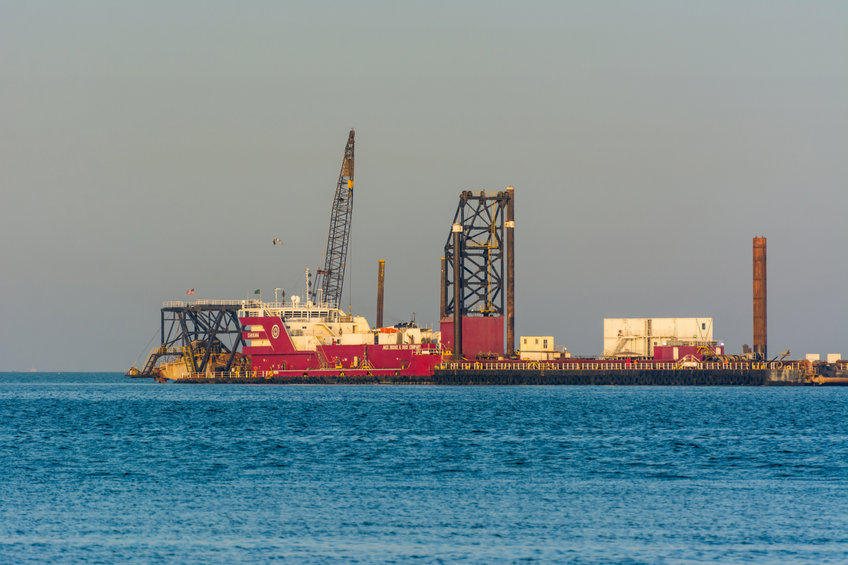BY DAVID HOLT:
While most Americans have never heard of it, the Interior Department’s five-year plan for offshore energy development is essential to maintaining our basic standard of living and keeping the prices for thousands of everyday goods and services low. At a time of record inflation and sky-high energy costs, it is critical that the Biden Administration show its energy and environmental leadership by moving forward with this offshore energy plan.
Since 1953, the U.S. Interior Secretary has been required by law to prepare a five-year plan to set a schedule for oil and gas leases in U.S. offshore waters. It is a lengthy, multi-year regulatory process with multiple stages for public comment, input and consultation.
It is one of the most lucrative federal programs in existence, often contributing more money to the U.S. Treasury than any other program except federal income taxes. It generates billions for states and local governments, creates tens of thousands or jobs all across the U.S. economy, and, most importantly, because it contributes more than 30% of our energy, offshore production ensures we all have the essential energy we need to keep our homes warm, lights on and economy thriving.
As of today, the current plan is scheduled to expire on July 1, and there is increasing concern that the Biden Administration has not yet begun the process to initiate the new 2022-2027 five-year plan. These concerns are even greater now because high energy prices and rising inflation are such a drag on our wallets and the overall economy. Historically, the simple action of announcing a responsible and impactful five-year plan has immediately given global energy markets near- and longer-term signals to help alleviate high energy prices.
Further, analytical models show that, because of our strong environmental regulatory regime, the U.S. is leading the world in emission reductions – including climate emission reductions – with the U.S. offshore energy program the most environmentally responsible offshore basin in the world. A strong five-year plan – with strong and consistent regulatory structures and transparent rules, will only advance U.S. leadership in meeting our energy and environmental goals in unison.
Yet some continue to argue that any oil and gas production is detrimental. This is a flawed argument that ignores the reality that economies are dependent on energy – including oil and natural gas – and eliminating them too quickly will result in higher – not lower – emissions.
International energy forecasts overwhelmingly show significant demand for oil and gas for decades to come. If the U.S. is to meet its economic and production obligations to farmers, manufacturers, grocers, truck drivers, laborers, small businesses and households all across the nation, our energy and environmental policies must meet our baseline needs while continuing to advance ever-improving environmental goals.
Without a plan, global and domestic doubts will escalate about our nation’s commitment to meeting its energy demands – especially on the heels of recent measures to pause energy production and pipeline construction in the U.S. Most of these measures have made oil and gas production more challenging, triggering the highest gasoline, home heating and electricity prices in years for small businesses, parents and families – especially those families near the poverty line who cannot afford to pay more for energy.
It is time we all recognize that energy justice is important, and our political leaders must avoid creating policies that unnecessarily increase energy prices.
Nearly everyone has a holiday 2021 story of eye-popping grocery bills. But as usual, Americans who live in poverty or on fixed incomes feel that squeeze sharper than the rest of us. If prices are bad enough to stir grumbling among those who can absorb 23% higher food prices and 59% higher energy prices, then please consider for a second those who cannot.
Many of us will have to take fewer trips or spend less disposable income; folks in poverty may have to choose between food or paying their energy bills. Or potentially risk their health by keeping the heat off in the winter, to avoid incurring a large bill. This is unacceptable in 21st Century America, especially when we lead the world in energy production and emissions reduction.
Yet offshore and onshore oil and gas production declined in 2021. For instance, in September – the most recent month for federal data – U.S. crude output fell slightly from a year earlier, with a drop of nearly 30% in offshore Gulf of Mexico production offsetting onshore gains. Demand for oil, however, climbed 9.8% from a year earlier.
The administration is legally obligated to prepare the five-year plan including a schedule of oil and gas lease sales. It must indicate the size, timing and location of proposed leasing activity to best meet the nation’s energy needs for the five-year period following its approval, while also addressing a range of economic, environmental and social considerations.
It is essential that this process begin immediately.
It would signal to the public and financial markets the seriousness of our nation’s energy and environmental policy, and continued U.S. leadership toward our ambitious 2050 net zero carbon emissions goal while meeting the country’s robust and ever-growing energy demand.
Families, parents and small businesses are all hurting from high prices, and less expensive energy is the key to bringing them down. The fastest way to do that is not asking OPEC to increase supply, certainly not when we have the ability to meet surging demand ourselves.
